COVID-19 in MN: Record daily cases, deaths, tests; hospitalizations top 1K

Go Deeper.
Create an account or log in to save stories.
Like this?
Thanks for liking this story! We have added it to a list of your favorite stories.
Updated 3 p.m.
A bad week in Minnesota’s COVID-19 pandemic is closing out in an awful way.
The Health Department on Friday reported 5,454 newly confirmed or probable cases of the disease — a new one-day high and the first time that daily count has crossed 5,000. It was the fourth consecutive day of record new cases; 36 more people died, another grim daily record.
The uncontrolled spread is being driven now by Minnesotans’ informal gatherings and get-togethers with family and friends where it’s spread unknowingly by people who have the virus but do not have symptoms, officials say.
“Our behavior is driving this … literally thousands and thousands of small decisions happening around Minnesota that are the issue here,” Health Commissioner Jan Malcolm said Friday.
Turn Up Your Support
MPR News helps you turn down the noise and build shared understanding. Turn up your support for this public resource and keep trusted journalism accessible to all.
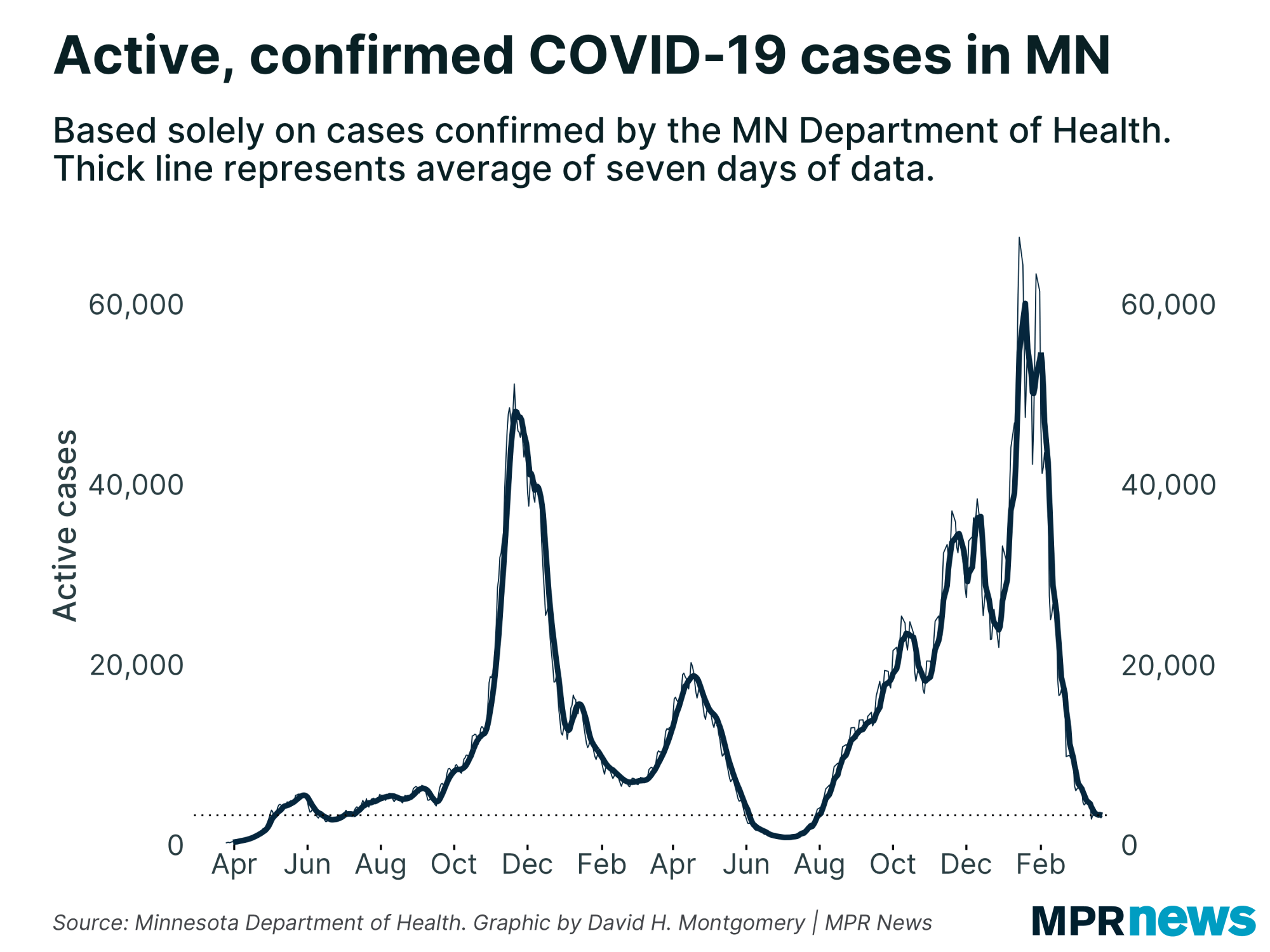
Kris Ehresmann, the state’s infectious disease director, implored Minnesotans to wear masks in public gathering spaces, socially distance, stay home if you don’t feel well and take other measures to stop the spread.
“You have got to make changes,” said a clearly frustrated Ehresmann. “We really need people to take this seriously and make some changes.”
Gatherings ‘risky right now’
Friday’s reported record caseload surfaced with record testing. Still, the numbers offered a startling confirmation of the repeated warnings from public health authorities over the past month that the disease was spreading uncontrolled throughout the state.
About 1,000 people are in Minnesota hospital beds now from COVID-19, including more than 200 needing intensive care.
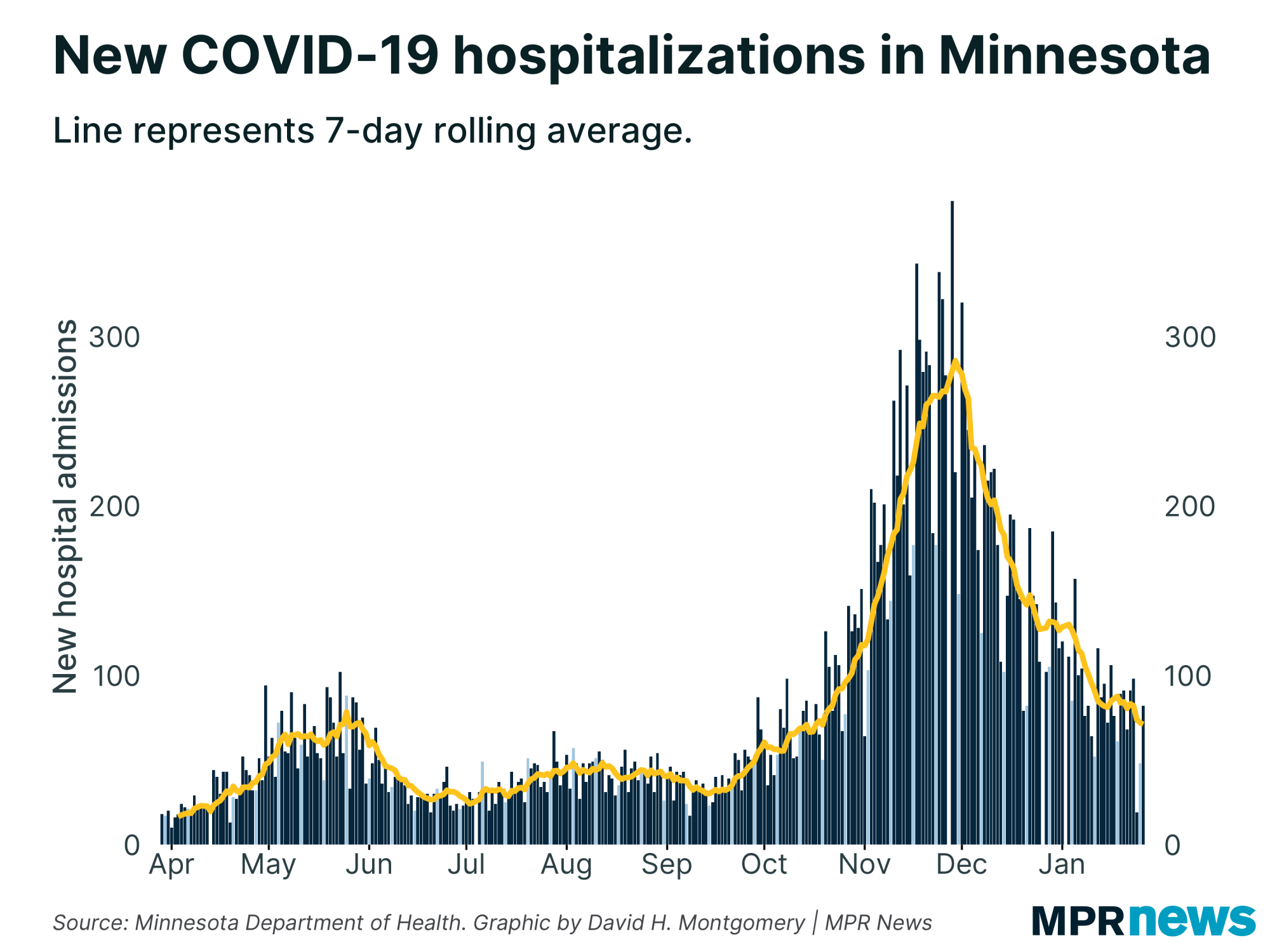
There’s increasing concern about the ability of hospitals to handle more. They were already full in the summer and fall from normal use, and the surge in COVID-19 patients is putting hospitals in the Twin Cities “near the top of their capacity,” Malcolm said. Staffing is becoming an challenge as more health care workers get sick, she added.
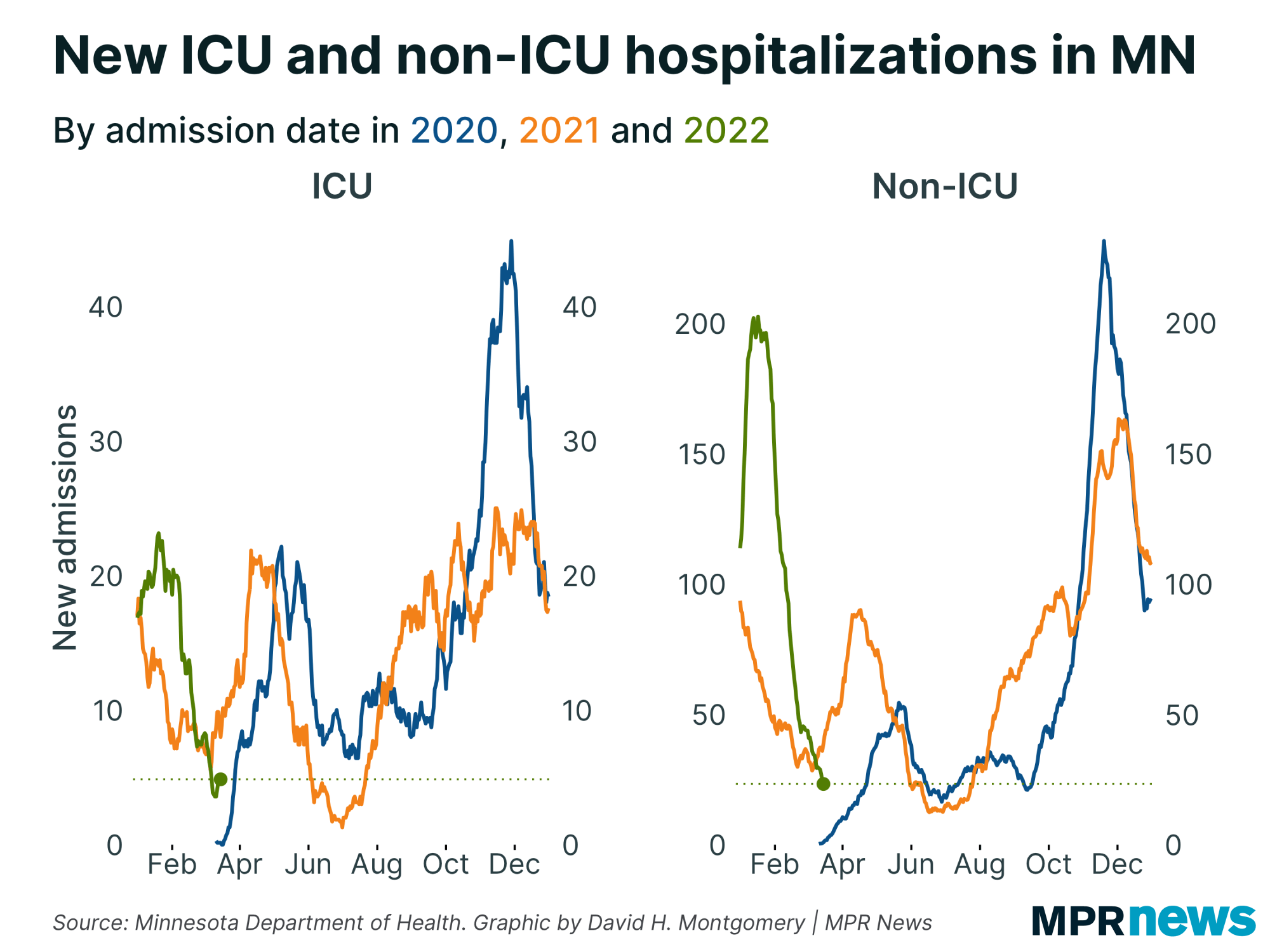
Minnesota’s confirmed some 25,000 new cases since last Friday.
“The level of virus circulating in our communities is at an all-time high,” Malcolm said Wednesday. “This increases the chance that you'll be exposed, even if the people you’re with have no symptoms.”
She urged people to limit contact with anyone outside their immediate households. “The fact is gathering in a group of people is risky right now.”
Of the 170,307 confirmed or probable cases identified in the pandemic to date, about 82 percent have recovered to the point they no longer need to be isolated.
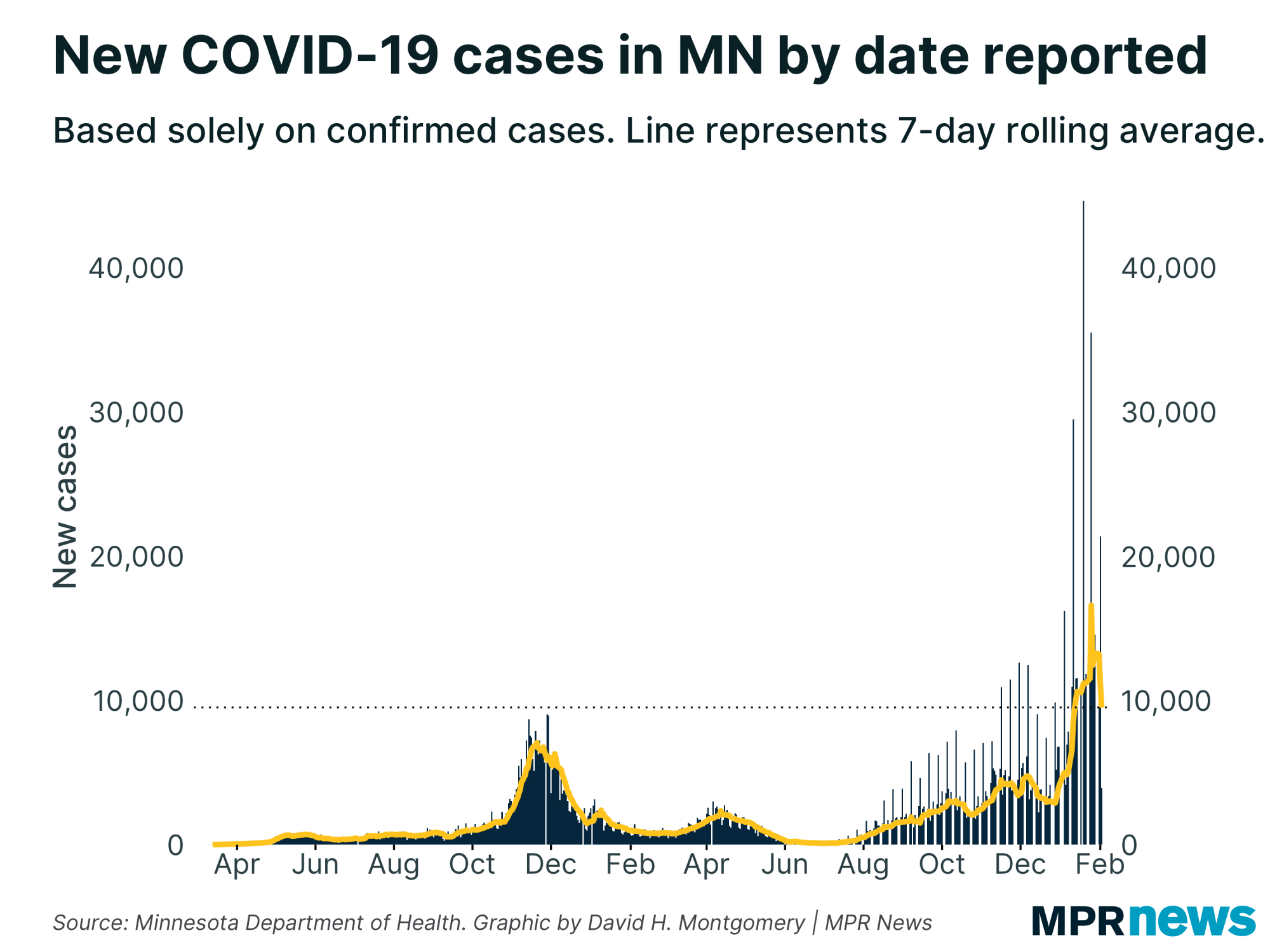
The deaths reported Friday raised Minnesota’s toll to 2,591. Among those who’ve died, about 69 percent had been living in long-term care or assisted living facilities; most had underlying health problems.

Caseloads rising across age groups
New cases are up dramatically over the past month in all age groups.
People in their 20s still make up the age bracket with the state’s largest number of confirmed cases — nearly 35,600 since the pandemic began, including 19,700 among people ages 20-24.
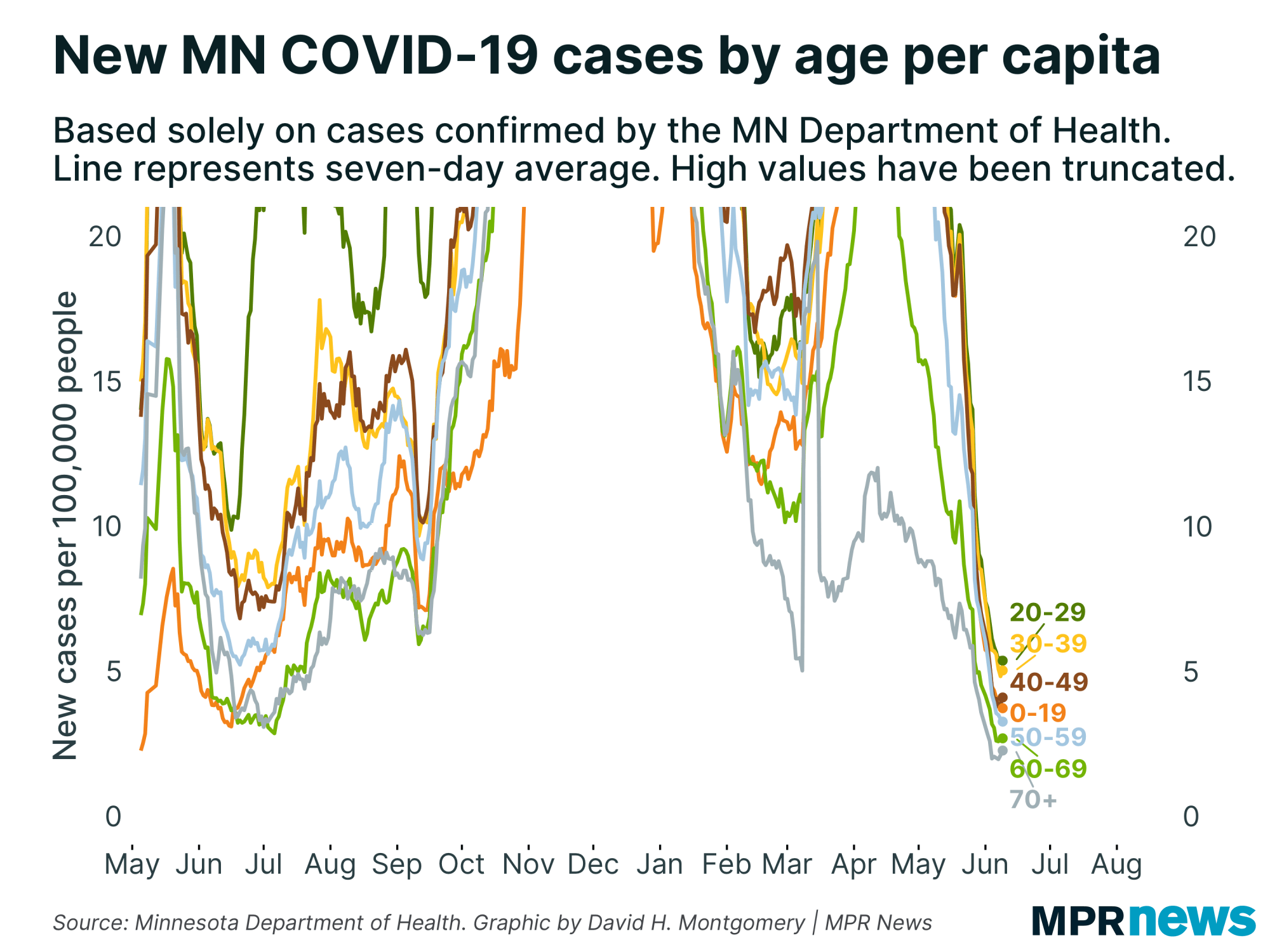
The number of high school-age children confirmed with the disease has also grown, with more than 14,000 total cases among children ages 15 to 19 since the pandemic began.
Those numbers help explain why experts remain particularly concerned about teens and young adults as spreaders of the virus.
While less likely to feel the worst effects of the disease and end up hospitalized, experts worry youth and young adults will spread it to grandparents and other vulnerable populations. It’s especially concerning because people can have the coronavirus and spread COVID-19 when they don’t have symptoms.
Virus surges along Minnesota’s western border
Regionally, central and northern Minnesota have driven much of the recent increase in new cases while Hennepin and Ramsey counties show some of the slowest case growth in the state.
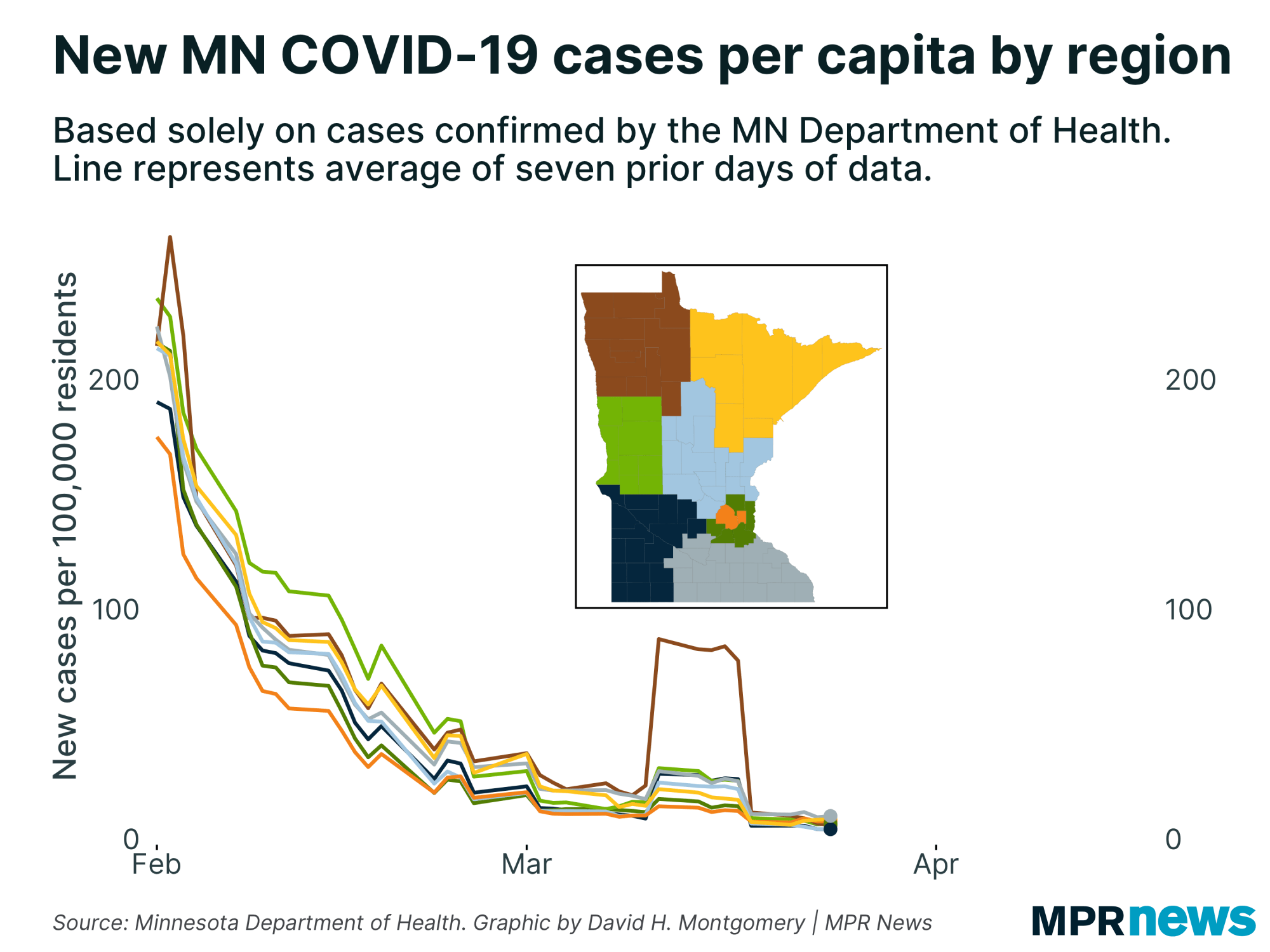
Newly reported cases have been highest in northwestern Minnesota. Cases are surging currently in the Dakotas. North Dakota and South Dakota have the country’s worst per-capita spread rates.
Collectively, rural areas of Minnesota continue to report the most new COVID-19 cases. Northern Minnesota, once the region least affected by the disease, has also seen its caseload grow dramatically in recent weeks.
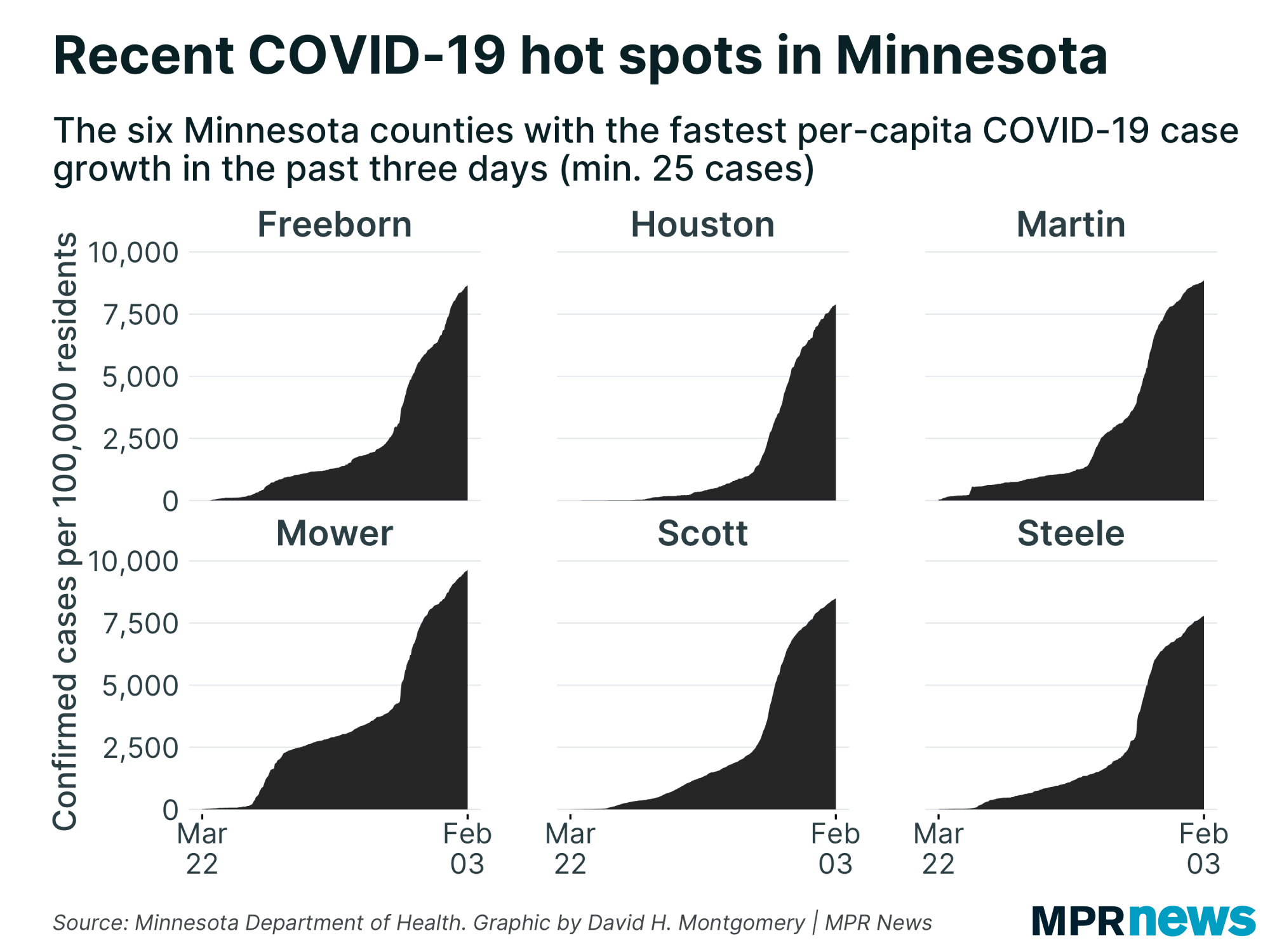
Latino, Indigenous cases jump
In Minnesota and across the country, COVID-19 has hit communities of color disproportionately hard in both cases and deaths.
That’s especially true for Minnesotans of Hispanic descent. They, along with Black Minnesotans are also being hospitalized and moved to intensive care units at higher rates than the overall population.
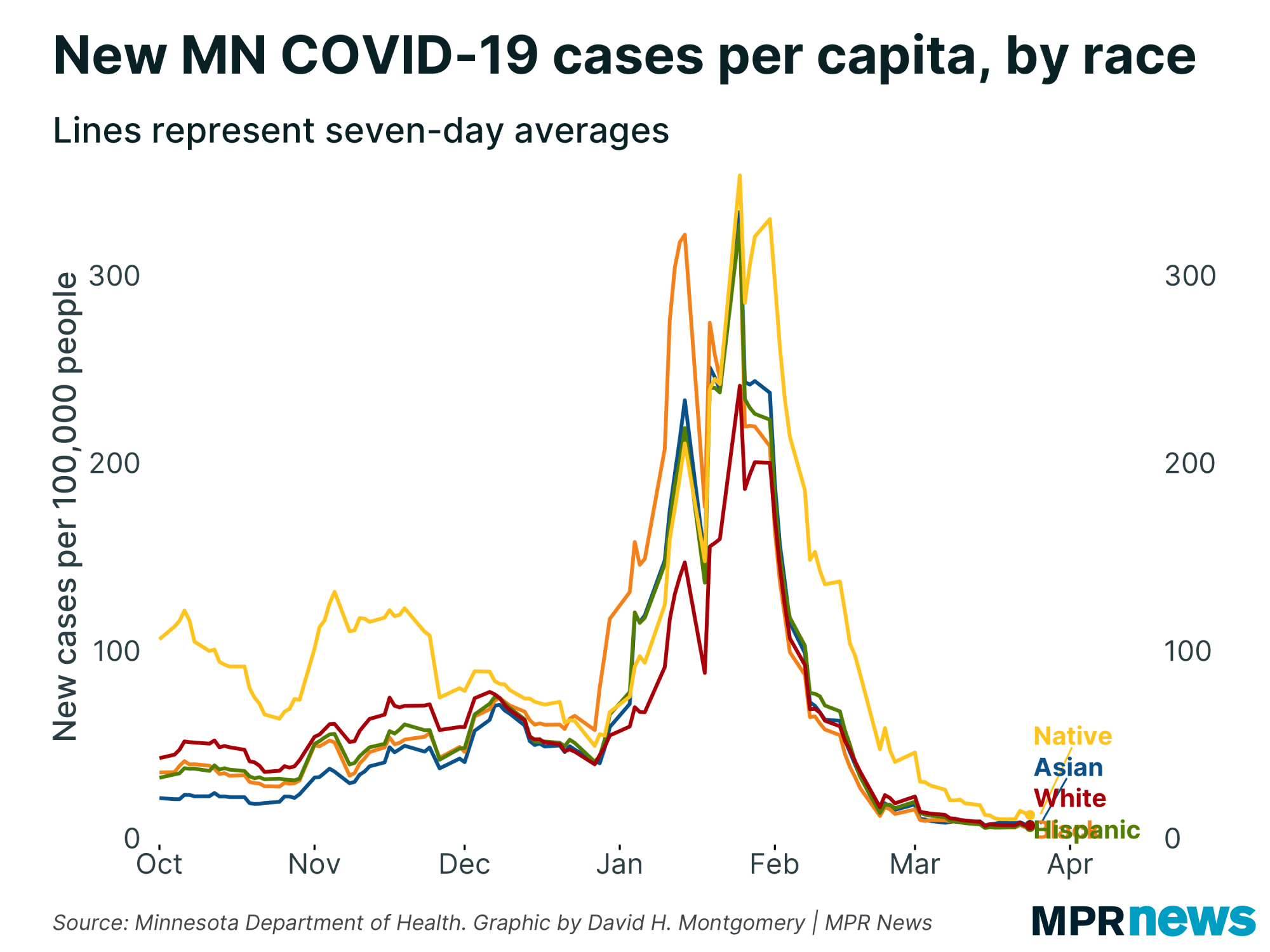
Similar trends hold true for Minnesota’s Indigenous residents. Counts among Indigenous people jumped in October relative to population.
October data also show newly confirmed cases accelerating among Latino people in Minnesota.
Distrust of the government, together with deeply rooted health and economic disparities, have hampered efforts to boost testing among communities of color, particularly for unauthorized immigrants who fear their personal information may be used to deport them.
‘Minnesota is in a bad spot’
The overall numbers continue to paint a troubling picture of a rapidly worsening pandemic in Minnesota. The latest numbers continue to show rampant spread across Minnesota, not limited to just one region or demographic group. like earlier in the pandemic.
State authorities had worried that late summer and early fall gatherings, sporting events and informal get-togethers would drive an October surge as Minnesotans let down their guard against the virus. That happened, and it’s now spilling into November.
“Minnesota is in a bad spot … and it’s going to get worse before it gets better,” Ehresmann told reporters Monday. While more testing is uncovering more cases, “it’s not the testing that’s the problem,” Ehresmann said. “It’s the sheer fact that we have so much virus circulating in our state.”
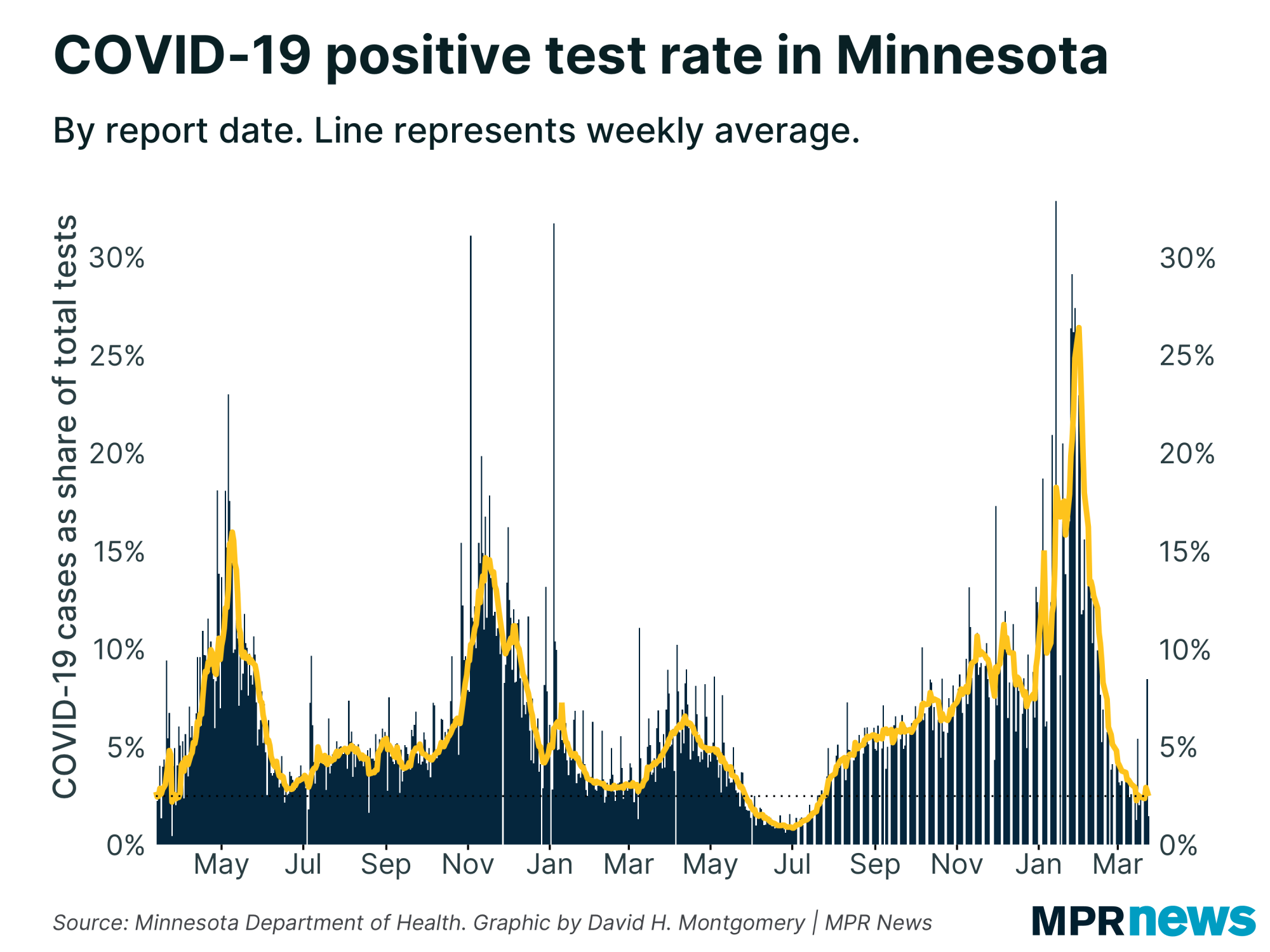
Malcolm on Friday faced repeated questions from reporters about whether the increasingly dire situation of skyrocketing cases, hospitalizations and deaths would compel Gov. Tim Walz to reimpose more restrictions on daily life similar to what Minnesota went through in the spring.
“If Minnesotans were following the guidelines that currently exist, we wouldn’t need further dial backs,” she said. “We just need to keep getting that message out.”
Developments around the state
New Walz order allows teachers more time to prepare for distance learning
A new executive order from Gov. Tim Walz gives teachers more time to prepare for teaching in distance and hybrid learning scenarios.
The new order mandates that districts build in more time to each school day for K-12 teachers to plan their lessons. Now schools must set aside 30 minutes of preparation each day in places where educators are teaching full-time distance learning or a combination of distance and in-person instruction.
The order comes after many teachers raised concerns about not having enough time to prepare for a drastically different learning model as schools have adapted to the COVID-19 pandemic. The changes may mean schools will have to adjust their schedules. Districts have until Nov. 30 to implement the new order.
— Elizabeth Shockman | MPR News
Wisconsin tops 6,000 new virus cases, setting record
Wisconsin topped more than 6,000 new coronavirus cases on Friday for the first time, setting a new record as COVID-19 continues to rage across the state.
Also on Friday, a state appeals court ruled that an order from Gov. Tony Evers' administration to limit how many people can gather in bars, restaurants and other indoor venues was invalid and unenforceable. The on again-off again order, first issued on Oct. 6, had not been in effect since an appeals court blocked it on Oct. 23.
The order, had it been in effect, was scheduled to expire on Friday. The appeals court said the order issued by Department of Health Services Secretary Andrea Palm should have gone through the rule-making process, which requires legislative approval.
Evers issued the order as a way to curb the spread of the virus, which has been surging since mid-September. On Friday, there were 6,141 new cases, an all-time daily high, and 62 more deaths. To date, 2,256 people have died from the virus.
The seven-day average of new cases topped 5,000, more than five-times as high as it was two weeks ago, the state Department of Health Services reported. Wisconsin ranked third in new cases per capita over the past two weeks, according to Johns Hopkins.
Evers pursued the capacity limits as part of his strategy to combat the virus. A statewide mask mandate remains in effect, but it's being challenged by a conservative law firm and Republicans who control the Legislature. Evers has blasted Republicans for not convening the Legislature to take action on the virus since they last met in April.
The capacity limit rule was first challenged by the Tavern League of Wisconsin and the appeal was taken up by The Mix-Up Bar in Amery and Pro-Life Wisconsin, which argued that its ability to hold fundraisers indoors was hindered by the order limiting capacity to no more than 25 percent.
The Wisconsin Supreme Court also previously struck down Evers' “safer at home” order in May, saying it should have gone through the Legislature as an administrative rule.
— The Associated Press
Allina seeking volunteers for COVID vaccine trial
Allina Health is looking for volunteers for a clinical trial of one of the major coronavirus vaccines.
Sixty-thousand people will take part in study through 190 locations around the world. Half will get the medicine and the other half will get a placebo.
Dr. Frank Rhame is the principle investigator for the Allina site. He said they're looking volunteers who are 18 and older.
"You want to start with healthy people first [to] get some sense that it's a good idea, that it's working and there's no unexpected side effects. But you also want to get the people who have comorbidities in there because they're the ones that suffer the most and you need to be sure that it works in those groups as well."
Rhame said researchers are especially seeking low-income people and people of color for their study to ensure the vaccine is properly tested on those populations. Those wishing to participate can get more information here.
— Mark Zdechlik | MPR News
Officials urge COVID precautions during deer opener
With Minnesota’s deer hunting season set to open Saturday, state health officials are urging hunters to take precautions against contracting or spreading COVID-19.
“If you're hunting with people outside your immediate household, please mask up while indoors,” including inside buildings at deer camps, “and keep a distance of 6 feet all times inside and out,” Kris Ehresmann, the state’s infectious disease director, said Wednesday.
She urged hunters to stay home if they don’t feel well.
— MPR News Staff
MN opens saliva testing sites to Wisconsinites
As COVID-19 cases surge to the east, Gov. Tim Walz has opened saliva testing sites in St. Paul, Winona and Duluth to people living in Wisconsin, according to the Minnesota Department of Health.
Minnesota is investing at least $14 million of its federal CARES Act funding into saliva coronavirus testing, a process developed at Rutgers University and marketed by Vault Health.
Public health officials say it's a relatively easy and fast way to test more people for the virus.
Some of the Minnesota's CARES Act funding will go to covering the cost of the test, and Minnesota is working out an agreement to make sure Wisconsin covers the cost of the test for its residents.
— Catharine Richert | MPR News
Top headlines
During the pandemic, Minnesota school levy requests hit a 24-year low: Minnesota K-12 districts received low voter approval on school funding requests in an unprecedented presidential election year. Already cash-strapped schools are worried about the potential for more financial strain.
Critical care doctors already feeling effects of COVID surge: As COVID-19 cases surge around the state, Minnesota hospitals are nearly full. Doctors working on the front lines of the pandemic say it’s just a matter of time before the system is in crisis.
COVID-19 in Minnesota
Data in these graphs are based on the Minnesota Department of Health's cumulative totals released at 11 a.m. daily. You can find more detailed statistics on COVID-19 at the Health Department website.


